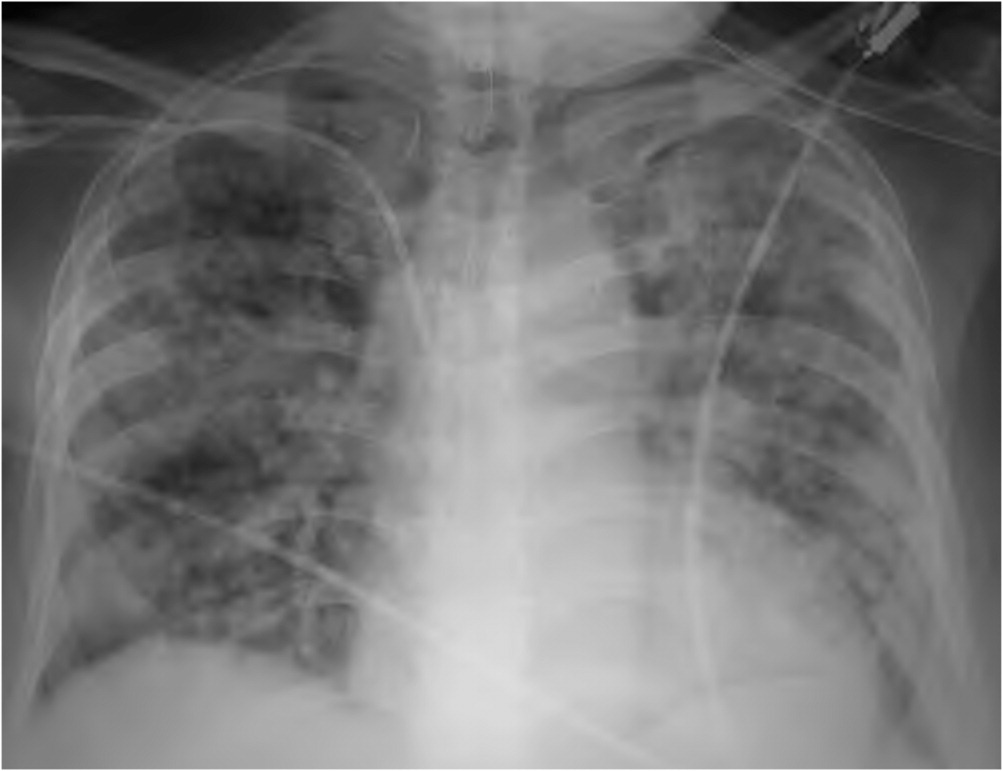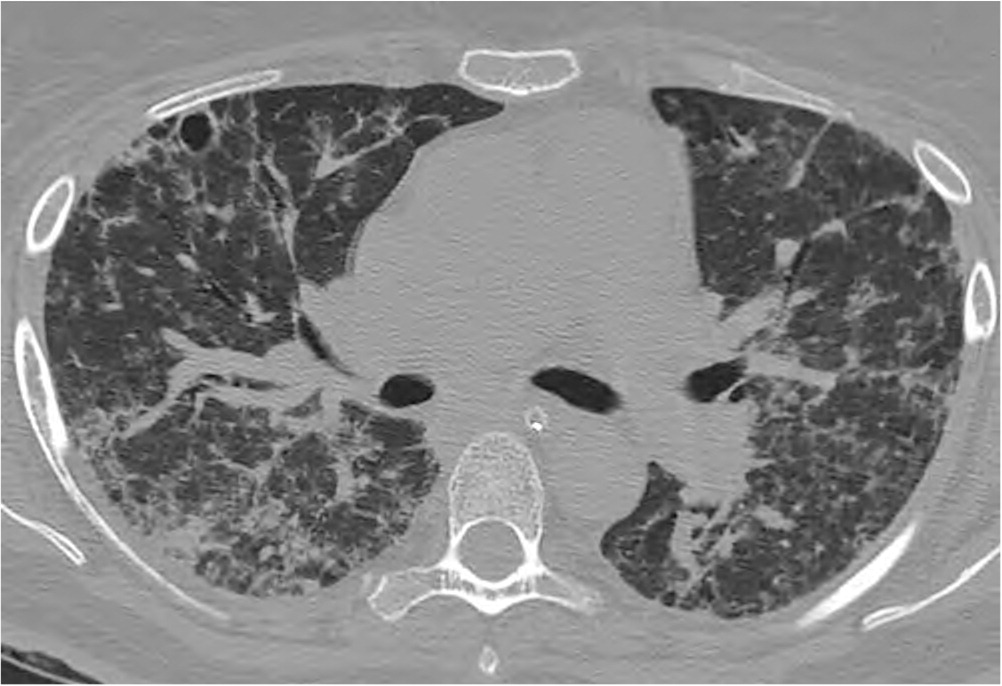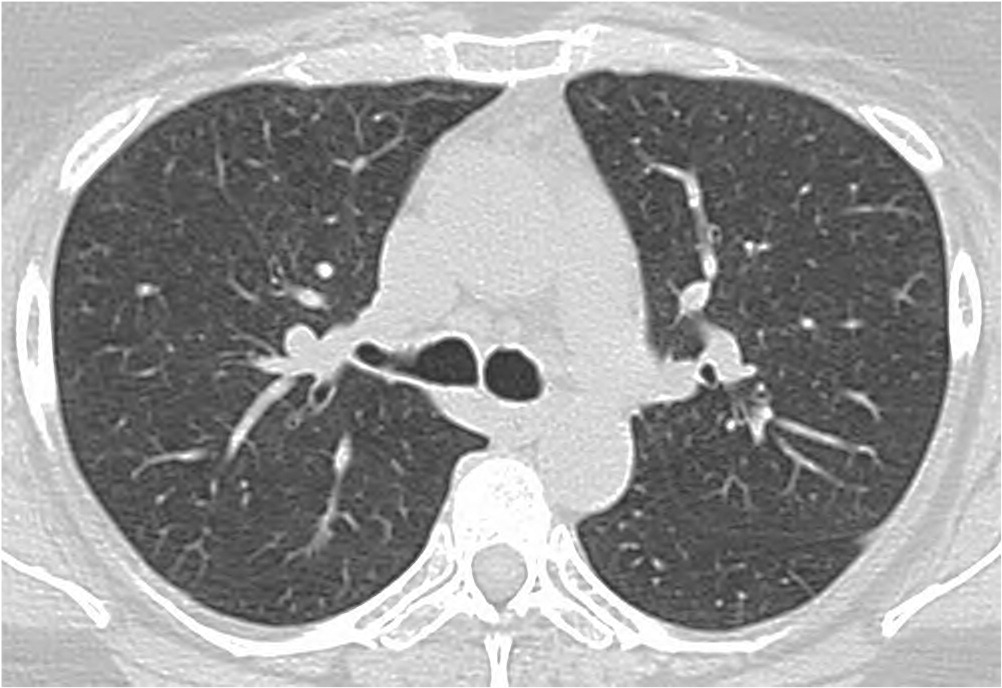
Am Fam Physician. 2020;102(2):74-76
Author disclosure: No relevant financial affiliations.
To the Editor: Electronic cigarette (e-cigarette) or vaping product use–associated lung injury (EVALI) is an emerging public health epidemic.1 The pathogenesis and natural history are still unknown despite a series of cases that have been reported in the United States.2 Vitamin E acetate and tetrahydrocannabinol (THC) have been proposed as the cause of the lung injury.3 Deaths have been reported; however, extrapulmonary manifestations and the degree of residual lung damage in survivors is still unclear.
A 51-year-old woman who was vaping flavored nicotine e-cigarettes for 18 months for smoking cessation presented with acute breathlessness, bilateral diffuse alveolar opacities on chest radiography (Figure 1), and a partial pressure of arterial oxygen to fraction of inspired oxygen of 48. Her history of vaping, acute respiratory distress syndrome (ARDS), negative septic and autoimmune profiles, and normal cardiac and renal functions satisfied current diagnostic criteria for EVALI.2 Her serum potassium level was 2.2 mEq per L (2.2 mmol per L). Plasma renin and aldosterone levels were within normal limits. Hypokalemia was refractory for seven days despite potassium supplementation. After seven days of mechanical ventilation and empiric broad-spectrum antibiotic therapy, the patient was successfully weaned off ventilatory support. High-resolution computed tomography of the chest three weeks later showed interlobular and intralobular septal thickening with architectural distortion consistent with a late or fibrotic phase of ARDS (Figure 2), which subsequently normalized (Figure 3). Clinical normalization occurred at 12 weeks, and further progress was uneventful. The patient stopped vaping, and subsequent serum potassium levels remained normal for four years after her acute presentation of EVALI.



Persistent profound hypokalemia without any other distinct risk factors suggests a link to the licorice flavoring in vaping. Ingestion of glycyrrhizic acid, the active ingredient in licorice, is known to cause hypokalemia through a mineralocorticoid effect by inhibition of renal 11 beta-hydroxysteroid dehydrogenase.4 Hypokalemia caused by inhalation has been reported in a single study.5 Flavoring chemicals such as methyl and ethyl salicylates have been shown to cause hypokalemia when ingested. Hypokalemia caused by vaping has not been previously reported. More research on flavors in tobacco products and e-liquids is needed.
